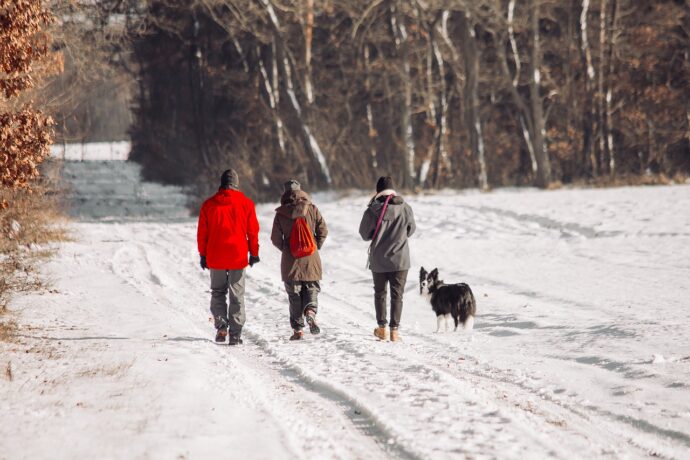Taking your dog on their daily walks is important, no matter what time of year. It’s important for you, and for your four-legged friend to get daily exercise and stimulation. While the cold weather may have you pausing at the door, there are some other precautions you should take to ensure that your best friend is safe on your walks as well. Protecting your dog’s feet and paw pads can result in a better time for you and your dog, but also may extend your walking time in some cases, too. Here are our best tips for prepping your dog’s feet and keeping them safe during the winter:
Prep for salt and sand
Salt and sand can wreak havoc on your dog’s paw pads, so protecting them from the drying effects of these de-icing methods is important. Salt can cause your dog’s paw pads to dry out, crack, and bleed. Other de-icers can have chemical compounds that can get into your dog’s bloodstream and harm them if your dog licks their paws. If you can, protecting your dog’s paws with booties is a great solution, or utilizing something like Paw Soother can help, but if your dog won’t put up with booties on their paws, make sure to give a good rinse in warm water when you get home and pat dry.
Do a paw check
Additionally, sweaty paws touching the cold ground can be painful for your dog. Limiting your dog’s contact with certain surfaces, like avoiding metal, can help keep your dog’s feet safe. Try not to bring your dog through sticky snow so ice doesn’t build up between their paw pads and lodge in there. Remember that checking your dog’s paws when you get back from a walk is always a good idea.
Trim hair between paw pads
If your dog has a lot of hair between their paw pads, getting the hair trimmed can help ice, snow, and salt from clinging between the pads, and can help your dog grip on hard to grip surfaces like ice. Consider having a groomer trim up the hair between your dog’s paw pads.
Cold weather is not just uncomfortable for you, but can be for your dog too, especially for our shorter-haired friends. Remember that if your dog is not a cold-weather dog, they may need to take shorter walks until warmer weather shows up. Happy walking!

